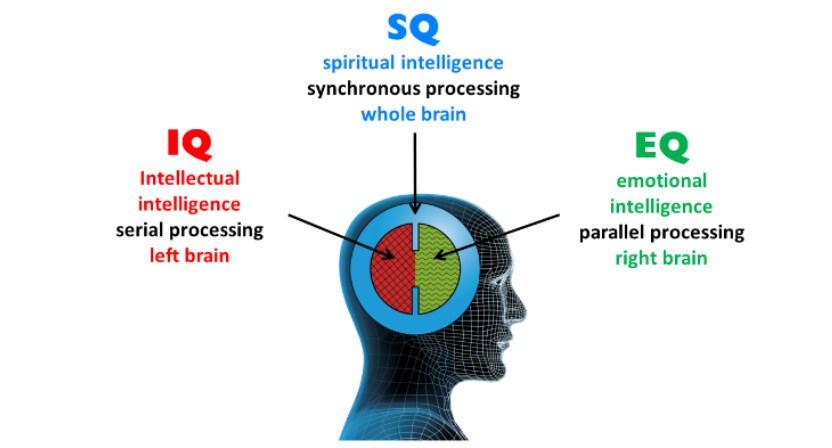Psychotechnical Tests and Group dynamics

Tests are objective tests that are used to assess a person’s abilities to perform certain tasks, personality traits, interests, motivations, intelligence, reactions to different situations, as well as their future behaviour at work.
Recommendations prior to testing:
- Be calm and rested.
- Read the instructions carefully and comply with them during the development of the tests.
- Be focused on taking the tests without worrying about what the other candidates are doing.
- Be aware of the time available, but without being overwhelmed. Generally, the time available is insufficient to finish the tests.
Types of tests
The different tests used in the selection of personnel can be classified into the following types:
- Of personality.
- Intelligence.
- Of aptitudes.
PERSONALITY TESTS
They are questionnaires made to evaluate the candidate’s personality traits, such as stability, emotional control, perseverance, sincerity, and potential problems psychic.
Factorial tests. They are questionnaires that consist of a number of questions that vary between fifty and five hundred. These are simple questions; there are no right or wrong answers. You can answer without any concern. You have to answer honestly to avoid contradicting yourselves, since the same questions can appear written differently.
The answer it is usually YES or NO. Examples:
- I like to speak in public (YES or NO).
- I get angry frequently (YES or NO).
- I have a pleasant social relationship (YES or NO).
- I am punctual (Yes or no).
- I am rather calm and peaceful (YES or NO).
Projective tests. They try to know the personality through the answers given to a poorly structured material.
Examples of this type are:
- TAT figures (Thematic Apperception Test). They consist of a series of plates that represent certain scenes with characters in ambiguous situations (for example, an older woman seems to suggest something in the ear to a young person). The individual has to interpret what he sees or invent a brief history of what the scene represents. The individual tends to interpret the scene according to his personality, current situation, state of mind …
- Form to complete sentences. The sentences that are proposed must be completed. For example, “I would like…”; “If I had money, I would buy …”; “Love is…”; “For me the most important it is…”. The individual may be asked to respond immediately, without thinking, or to taking time to respond.
- Rorschach test. The individual is presented with some plates with some spots of ink that he has to interpret.
INTELLIGENCE OR LEVEL TESTS
These tests are intended to evaluate the intellectual capacity of a person by the aptitude that he shows to understand and solve a series of problems that arise. Some of the most used tests are:
- Numerical-spatial logical series. They present a series of numbers arranged in a determined sequence, which is missing the last link and which must be guessed by the candidate.
- Examples: Series of numbers:
- 2 – 4 – 6 – 8 – …
- 1 – 2 – 3 – 5 – 8 – 13 – …
- 1 – 4 – 7 – 10 – 13 – …
- Another well-known example is the test with series of dominoes.
- Spatial logical series. They respond to the same scheme as the previous ones, but with the provision in the space of drawings and figures.
- Verbal reasoning tests. They value the ability to solve questions or problems using oral or written language. There are different verbal reasoning or intelligence tests, for example:
- From synonyms (in a series of words, find those that mean the same thing).
- Dog – cat – can – rabbit – rooster.
- From antonyms (find words that mean the opposite of others).
- Good – nice – funny – bad – lazy.
- Series of words (in a word relationship with something in common, find the one that does not have relationship with others).
- Father – cousin – brother – friend – grandfather.

Source: Own elaboration
APTITUDE TESTS
These tests seek to measure the potential of an individual in a determined aptitude and its performance in the specific tasks that are proposed. We can highlight the following:
- Verbal aptitude. They are those that have been devised to assess the sufficiency and suitability in the management of oral or written language. They can be of verbal comprehension, fluency of knowledge basic grammar.
- Numerical aptitude. They value the ability to perform complex repetitive operations based on mathematical concepts.
- Spatial aptitude. They indicate the ability to visualize simple objects and the ability to create a relation between objects located in space..
- Perceptual and attention skills. They are intended to assess resistance to fatigue, which in some jobs, such as quality control, supervision, etc., has great importance.
- Administrative aptitude. They indicate the necessary aptitude to function in administrative work.
Activity
Test for learning different questions models:
1. Indicate the number that follows in the following series:
a) 3 – 6 – 9 – 12 – 15 – 18 – …
b) 0 – 3 – 3 – 6 – 9 – 15 – 24 – …
c) 4 – 5 – 7 – 10 – 14 – 19 – …
2. Indicate the missing letters in the series that follow:
a) m n ñ o p q r s… ..
b) az by cx dw ev… ..
c) fa ge hi jo …..
3. Of the words indicated, underline the one that is synonymous (has the same or similar meaning) of the first of each series.
a) Auxiliary, snack, help, turn, buy, maxilla.
b) Obvious, curious, seer, trident, true, salutary, expensive.
c) Varnish, apprentice, nose, wood, lacquer, board
4. Of the words indicated, underline the one that is antonym (has an opposite meaning) of the first of each series.
a) Right, sane, limited, wrong, angry, excited.
b) Increase, grow, feed, snack, trust, decrease.
5. Underline the word that has the least relationship with the others.
a) Airplane, bicycle, car, moped, motorcycle.
b) Green, blue, indigo, yellow, grass, red, brown.
c) Almería, Córdoba, Seville, Cáceres, Málaga, Huelva.

